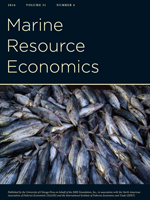Following decade-long growth in worldwide farming of pangasius and tilapia, imports to Germany, a main European market, have been reduced since 2010. One reason for this might be supply growth of wild species at the total German whitefish market, if market integration exists between farmed and wild-caught whitefish. This article examines market integration between farmed (pangasius and tilapia) and wild-caught (Alaska pollock, cod, and saithe) frozen whitefish in Germany and finds close integration. Hence, prices of frozen pangasius and tilapia fillets in Germany are determined not only by supply of these species, but more importantly by the much larger supplies of wild-caught cod and Alaska pollock. The implication of the presence of market integration is that the small-scale Asian farmers are secured against severe price reductions in Germany arising from farm productivity growth. However, market integration also makes them dependent on quotas and supply of competing wild-caught whitefish.
JEL Codes: C32, F15, Q21, Q22.





